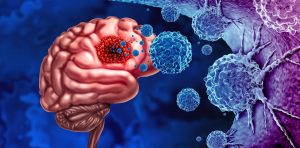New research delivers an answer to a burning question: When are COVID-19 patients most infectious?
The answer? Two days before and three days after they develop symptoms.
The findings highlight the importance of rapid testing and quarantine if someone is feeling sick, the study authors said.
The researchers also found that infected people are more likely to be asymptomatic if they caught the virus from a primary case (the first infected person in an outbreak) who was also asymptomatic.
“In previous studies, viral load has been used as an indirect measure of transmission,” said study co-leader Dr. Leonardo Martinez, an assistant professor of epidemiology at Boston University’s School of Public Health.
“We wanted to see if results from these past studies, which show that COVID cases are most transmissible a few days before and after symptom onset, could be confirmed by looking at secondary cases among close contacts,” Martinez said in a university news release.
For the study, Martinez and his colleagues analyzed data from about 9,000 close contacts of primary cases in the Zhejiang province of China from January 2020 to August 2020. That’s before the advent of the even more contagious Delta variant.
Close contacts included people who lived in the same household or who dined together, co-workers, people in hospital settings and riders in shared vehicles. They were monitored for at least 90 days after their initial positive COVID-19 test results.
Of the primary cases, 89% developed mild or moderate symptoms, 11% were asymptomatic, and none had severe symptoms.
Household contacts of primary cases and people who were exposed to primary cases multiple times or for longer amounts of time had higher infection rates than other close contacts, the findings showed.
But all close contacts were more likely to be infected by the primary case if they were exposed shortly before or after that person developed symptoms, according to the study published online Aug. 23 in JAMA Internal Medicine.
In comparison to mild and moderate symptomatic primary cases, those who were asymptomatic were much less likely to infect close contacts. If they did, the contacts were also less likely to have noticeable symptoms, the researchers reported.
“Our results suggest that the timing of exposure relative to primary-case symptoms is important for transmission, and this understanding provides further evidence that rapid testing and quarantine after someone is feeling sick is a critical step to control the epidemic,” Martinez said. “This study further emphasizes the need for vaccination, which reduces clinical severity among people that develop COVID.”
More information
The U.S. Centers for Disease Control and Prevention has more on COVID-19.
SOURCE: Boston University School of Medicine, news release, Aug. 26, 2021
Source: HealthDay
Copyright © 2025 HealthDay. All rights reserved.

















